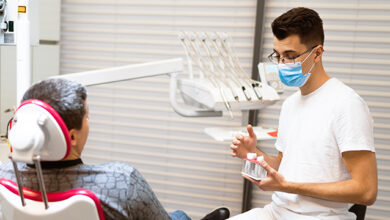Empower Yourself with Essential Skills: Breakaway Training for Safe and Effective Patient Care

Introduction: Why Breakaway Training is a Game-Changer in Patient Care
In the fast-paced, often unpredictable world of healthcare, professionals are expected to wear many hats. From being a caregiver and a confidant to a problem-solver and a mediator, the roles are multifaceted. But what happens when you find yourself in a situation that’s not just challenging but potentially dangerous? What do you do when a patient becomes aggressive, or a family member’s emotions escalate to a point where they pose a risk to themselves or others? These are not just hypothetical scenarios; they are real-life situations that healthcare professionals may encounter.
That’s where Breakaway Training comes into play. This specialized form of training is designed to equip healthcare providers with the essential skills needed to safely disengage from aggressive or dangerous situations without causing harm. It’s not about overpowering someone; it’s about understanding the dynamics of human behavior, recognizing the signs of escalation, and applying effective techniques to defuse the situation or make a safe exit.
In this comprehensive guide, we will delve deep into what breakaway training is, why it’s crucial in the healthcare setting, and how you can go about acquiring these invaluable skills. We’ll explore the core techniques involved, discuss the legal and ethical implications, and even share some real-world success stories. By the end of this article, you’ll have a thorough understanding of Breakaway Training and why it’s a game-changer in providing safe and effective patient care. So, buckle up as we embark on this enlightening journey.
Breakaway Training: What Is It?
The Basics of Breakaway Training: Breakaway Training is a set of techniques and strategies aimed at enabling healthcare workers to safely distance themselves from potentially harmful situations. It’s not about physical strength; it’s about the smart application of techniques to ensure everyone’s safety.
Why It’s Essential: In a high-pressure environment like healthcare, tensions can run high. Breakaway Training equips you with the skills to de-escalate situations and protect both yourself and your patients.
Legal and Ethical Implications: Understanding the legal framework around patient care and personal safety is crucial. Breakaway Training ensures that you are well-versed in the legal and ethical aspects of disengaging from harmful situations.
Core Techniques in Breakaway Training
Verbal De-escalation: Words are often the first line of defense. Learn how to use language effectively to calm down a situation before it escalates.
Physical Techniques: Sometimes, words are not enough. In such cases, knowing how to physically disengage without causing harm is vital.
Situational Awareness: Being aware of your surroundings can give you the upper hand in a tense situation. Breakaway Training teaches you how to read the room effectively.
Implementing Breakaway Training in Your Practice
Training Programs and Certification: Where can you get certified? What do these programs entail? We’ll guide you through the options.
Incorporating into Daily Practice: Once you’re trained, the next step is implementation. Learn how to make Breakaway Training a part of your daily routine.
Case Studies: Success Stories: Real-world examples can provide valuable insights. Here, we share some success stories that demonstrate the effectiveness of Breakaway Training.
The Benefits of Breakaway Training
Increased Safety: The most obvious benefit is the increased safety for both healthcare providers and patients.
Improved Patient Relations: When you can handle tense situations well, it builds trust and improves your relationship with patients.
Reduced Stress: Knowing you have the skills to handle difficult situations can significantly reduce workplace stress.
Challenges and How to Overcome Them
Time and Resource Constraints: Training takes time and resources, but the investment is well worth it.
Skepticism and Resistance: Not everyone is immediately on board with new training programs. Here’s how to get buy-in from your team.
Keeping Skills Updated: Like any other skill, Breakaway Training techniques need to be regularly updated and practiced.
Conclusion: Take Control with Breakaway Training
As we wrap up this extensive guide on Breakaway Training, it’s essential to reflect on the broader implications of what we’ve discussed. This isn’t just a set of techniques or a certificate to add to your professional portfolio. It’s a transformative approach to healthcare that prioritizes the safety and well-being of both the caregiver and the patient. It’s about empowering you, the healthcare professional, to take control of challenging situations, to act rather than react, and to do so in a manner that upholds the dignity and respect of all parties involved.
Investing in Breakaway Training is akin to investing in a culture of safety and excellence. It’s a commitment to being the best healthcare provider you can be, not just in terms of medical knowledge and technical skills but also in your ability to navigate the complex, often emotionally charged interactions that are an intrinsic part of patient care.
So, as you ponder the next steps in your professional development, consider Breakaway Training as more than just another item on a checklist. See it as a vital component of holistic, compassionate, and safe patient care. Take the first step in empowering yourself today, because when you are empowered, you empower others, creating a healthcare environment that is not just safe but also nurturing and healing. Thank you for taking the time to read this guide, and here’s to your journey towards becoming an empowered healthcare professional.


